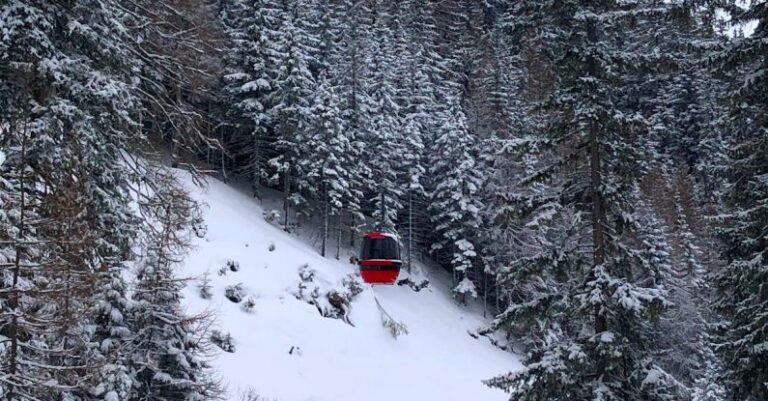
Backcountry skiing offers a thrilling and immersive experience for outdoor enthusiasts seeking adventure beyond the boundaries of traditional ski resorts. However, venturing into the backcountry also comes with its own set of risks and challenges. To ensure a safe and enjoyable backcountry skiing experience, it is crucial to adhere to the best safety practices. By following these guidelines, you can minimize the inherent dangers of backcountry skiing and make the most of your time in the pristine wilderness.
Understanding Avalanche Safety
Avalanches pose one of the most significant risks to backcountry skiers. It is essential to have a thorough understanding of avalanche safety protocols before heading out into the backcountry. Always check the avalanche forecast for your intended area and be aware of the current snow conditions. Consider taking an avalanche safety course to learn how to assess avalanche risk, use safety equipment such as beacons, shovels, and probes, and perform companion rescue in the event of an avalanche. Remember, knowledge and preparation are key to staying safe in avalanche terrain.
Navigating Terrain Safely
Navigating unfamiliar terrain in the backcountry requires careful planning and attention to detail. Before setting out on your backcountry skiing adventure, familiarize yourself with the area using maps, GPS devices, or guidebooks. Pay special attention to potential hazards such as cliffs, crevasses, and avalanche-prone slopes. Stay on established routes and communicate with your group to ensure everyone is aware of the planned route and meeting points. Always carry a map, compass, and GPS device as backup navigation tools and be prepared to adjust your route based on changing conditions.
Gear Up for Safety
Having the right gear can make a significant difference in your safety and comfort while backcountry skiing. Invest in high-quality, properly fitting equipment, including skis, boots, bindings, and climbing skins. Ensure your safety gear is in good working condition, including avalanche beacons, probes, shovels, and helmets. Dress in layers to regulate your body temperature and protect yourself from the elements. Pack essential items such as extra food and water, a first aid kit, a repair kit for your gear, and emergency shelter in case you get stranded in the backcountry. Remember, being prepared can mean the difference between a minor inconvenience and a life-threatening situation.
Travel in a Group
Backcountry skiing is best enjoyed with a group of experienced and like-minded individuals who share a commitment to safety. Traveling in a group provides mutual support, enhances decision-making, and allows for quicker response in case of an emergency. Before heading out, discuss your objectives, route plan, and communication protocols with your group. Assign roles and responsibilities, such as a designated leader and sweep, to ensure everyone is accounted for and safe throughout the journey. Stay connected with your group using radios, cell phones, or other communication devices and establish regular check-in points to monitor progress and address any concerns.
Stay Informed and Flexible
Weather and snow conditions in the backcountry can change rapidly, requiring skiers to stay informed and adaptable. Keep an eye on the weather forecast and be prepared to adjust your plans based on changing conditions. Monitor snowpack stability and avalanche risk throughout your journey, and be willing to turn back or choose an alternate route if conditions become unsafe. Stay attuned to your own physical and mental condition, as fatigue, dehydration, and other factors can impact your judgment and decision-making abilities. Remember, the mountains will always be there – it’s better to return safely and ski another day than to take unnecessary risks.
Embrace a Culture of Safety
In the world of backcountry skiing, safety should always be the top priority. Embrace a culture of safety by promoting open communication, respect for the environment, and a willingness to learn and improve your skills. Encourage your fellow skiers to prioritize safety and hold each other accountable for following best practices. Share your knowledge and experiences with others, and be open to receiving feedback and guidance from more experienced backcountry skiers. By fostering a culture of safety within the backcountry skiing community, we can all contribute to a safer and more enjoyable outdoor experience for everyone.
In conclusion, backcountry skiing offers a unique opportunity to explore remote and untouched landscapes while enjoying the thrill of skiing in pristine snow. By following the best safety practices, including avalanche awareness, terrain navigation, gear preparation, group travel, adaptability, and a culture of safety, you can minimize risks and maximize the enjoyment of your backcountry skiing adventures. Remember, safety is a collective responsibility – by looking out for yourself and your fellow skiers, you can help create a safer and more sustainable backcountry skiing experience for all. So, gear up, stay informed, and always prioritize safety on your backcountry skiing excursions.





